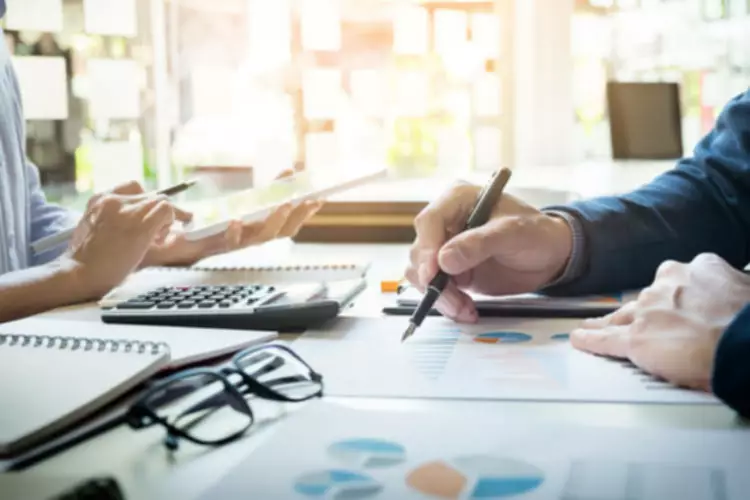Content
Besides his extensive derivative trading expertise, Adam is an expert in economics and behavioral finance. Adam received his master’s in economics from The New School for Social Research and his Ph.D. from the University of Wisconsin-Madison in sociology. He is a CFA charterholder as well as holding FINRA Series 7, 55 & 63 licenses. He currently researches and teaches economic sociology and the social studies of finance at the Hebrew University in Jerusalem. A business goes through modifications, such as selling or purchasing shares. Retail InvestorA retail investor is a non-professional individual investor who tends to invest a small sum in the equities, bonds, mutual funds, exchange-traded funds, and other baskets of securities. They often take the services of online or traditional brokerage firms or advisors for investment decision-making.
- Once your balances have been added to the correct categories, you’ll add the subtotals to arrive at your total liabilities, which are $150,000.
- Creditors and investors can use these categories in theirfinancial analysisof the business.
- They are categorized as current assets on the balance sheet as the payments expected within a year.
- Sometimes total liabilities are deducted from total assets to equal stockholders’ equity.
- If current assets are those which can be converted to cash within one year, non-current assets are those which cannot be converted within one year.
These assets are listed in the Current Assets account on a publicly traded company’s balance sheet. The quick ratio measures a company’s ability to meet its short-term obligations with its most liquid classified balance sheet assets. It divides the value of the Cash and Cash Equivalents account, the Marketable Securities account, and the Accounts Receivable account by the value of the Current Liabilities account.
Liabilities
A classified balance sheet also provides a clear and crisp view to the user. A simple way to calculate net worth is to subtract liabilities from assets . These are generally assets that are used to produce goods or services for the business. Instead, management can choose the accounts and classifications that will be most useful to its end users. Of the many types of Current Assets accounts, three are Cash and Cash Equivalents, Marketable Securities, and Prepaid Expenses.
For example, if shares of a company trade in very low volumes, it may not be possible to convert them to cash without impacting their market value. These shares would not be considered liquid and, therefore, would not have their value entered into the Current Assets account. Depending on the nature of the business and the products it markets, current assets can range from barrels of crude oil, fabricated goods, inventory for works in progress, raw materials, or foreign currency. These investments are temporary and are made from excess funds that you do not immediately need to conduct operations. You should make these investments in securities that can be converted into cash easily; usually short-term government obligations. When properly presented, a balance sheet shows the current financial status of your business.
Classified Balance Sheet Defined with Examples
The different subcategories help an investor understand the importance of a particular entry in the balance sheet and why it has https://www.bookstime.com/ been placed there. It also helps investors in their financial analysis and makes suitable decisions for their investments.
- The classifications used can be unique to certain specialized industries, and so will not necessarily match the classifications shown here.
- Learn about how assets work, how they can be categorized into different types, and why keeping track of them is important for both individuals and organizations.
- The balance sheets of most entities show separate classifications of current assets and current liabilities permitting ready determination of working capital.
- A classified balance sheet is a financial statement that separates a company’s assets and liabilities into different categories.
Continuing with Bob and his donut shop example, we can see how his traditional balance sheet and his classified balance sheet would look at the end of his financial period, i.e. month-end. Throughout this series of financial statements, you can download the Excel template below for free to see how Bob’s Donut Shoppe uses financial statements to evaluate the performance of his business.
Classified balance sheet
Over a period of time, the net worth of a profitable business will tend to grow if profits are retained in the business. The profits retained in the business are often listed in a special line item in the net worth section called “retained earnings”. Long-term liabilities consist of outstanding debt against long-term assets and may have a term of 20 or more years. Interest and principal payments due within the coming year on this debt are included in current liabilities. Only the amount of debt remaining after the current year’s principal payment is deducted is included in long-term liabilities. Intermediate liabilities consist of outstanding debt against intermediate assets and often have a term of three to seven years.
SOUTHERN STATES BANCSHARES, INC. Management’s Discussion and Analysis of Financial Condition and Results of Operations (form 10-Q) – Marketscreener.com
SOUTHERN STATES BANCSHARES, INC. Management’s Discussion and Analysis of Financial Condition and Results of Operations (form 10-Q).
Posted: Thu, 10 Nov 2022 08:00:00 GMT [source]
It’s a good idea to have balance sheets for internal use as well, however, as it also shows whether your business is trending upward or downward. If your company is slowly building debt and not assets, however, there may be issues with your company’s health. It is determined by subtracting the fair value of the company’s net identifiable assets from the total purchase price.

